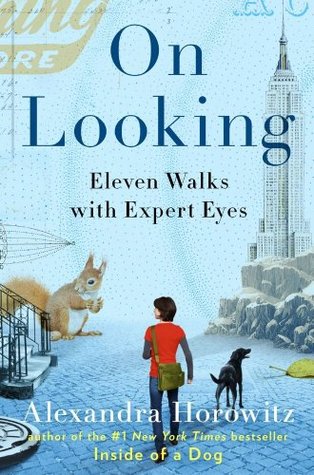More on this book
Community
Kindle Notes & Highlights
You missed that. Right now, you are missing the vast majority of what is happening around you.
Oh nuts. I deleted my comment I just made. Ok, I'm going to retype it.
I started reading this book back in 2013 when I was an urban dweller. And urban artist. Someone who really observed around me and made art for urban environs. Now, in 2024, for seven-some years, I've been engulfed in suburbia. My urban eyes are changing into suburbia eyes, as much as I like to deny it. But alas, living in this land of the suburbs and the... comparisons, the expectations, the status quo, the large houses on every walk...
The... not feeling as inspired to make art to leave on the sidewalk, because, well, most of my environs are houses. Not public property. Private property. There's something different about that. And the sights I see are no longer of busy streets with people walking. There are no alleys. The walks here are of houses, giant houses, houses much bigger than mine. The constant comparison.
Oh, to be in an apartment where you simply do what you do, and you don't worry about mowing your grass. Now, my observations are grass heights and grass color. This neighbor trims his grass nicely. This neighbor has lush grass.
I've tried making art to leave behind in places here in the burbs. But it doesn't feel the same. Before the art felt like there was a communication. Now in suburbia, the art feels like, it's cute. I suppose my art was cute before, with cute messages. But in the urban city it felt more deep. It felt more important. Like, making a mark meant something. The urban area in Chicago had more of a... this is Chicago. This is a big city. This is the place to be. Leaving art in Chicago felt more important.
Here, it feels like something else.
So my observations have changed. I know the challenges better of what everyday people face. The challenges of going the same route. The challenges of getting as much done as you possibly can. The challenges of not really observing. How do you turn your attention around? How do you truly express yourself and be a wacky person in midst of a place where everyone begs to be the same? Where everyone begs to have what someone else has?
Boy, I'm really slamming on suburbs here. Sorry. I should try to see the good. Sometimes it amazes me how when people drop off their kids at school absolutely nobody walks through the nature preserve half a block south of the school. The woods is literally two blocks long, one block wide. It's a micro-woods right there. Full of nature. Full of birds. Full of leaves. And nobody walks through it. Everyone is too busy going to their job or going back home. Nobody walks through this woods after dropping their kids off. This woods area is full of observation potential. Just go and hear all the birds. Smell all the woods.
So maybe I do have some observationness left in me. I keep telling myself that I shouldn't have this slant or view of the suburbs. I need to give it more of a chance. I walk about 30-40 minutes everyday as part of walking my daughter to school. That's actually fun doing the walk with her and noticing all the various things through the seasons.
And then there are all the nature paths out here in the surburbs. People are often on those. Certainly they enjoy observing and being in nature.I really enjoyed it when someone left a little gnome in one of the trees on the path.
Izzy Buscaglia liked this
This cacophony can be found right outside your house or apartment. Should someone see us standing quietly on the sidewalk in front of an apartment building, and ask us, “What’s up?” we might be hard-pressed to respond accurately: “My eyes are being tickled with a splendid display of colors; we are surrounded by improbably large stone towers;
Yes lots around us an it takes a curious mind to investigate it. Don't blame overload for your lack.
If only we had a system that let us take in what we do need to see— —and of course, we do: that system is attention. Having a way to tune out unnecessary information, to sort through the bombardment of visual and auditory noise, solves these problems. Objects in the world may seem benign, impotently hoping that your glance will light on them, but they are competing with each other for your regard. Attention is an intentional, unapologetic discriminator. It asks what is relevant right now, and gears us up to notice only that. Why bother sorting out all the elements of a visual scene? Evolution
...more
While tasting sounds or smelling letters is viewed as aberrant (if conducive to creativity) among adults, those eminently creative infants may sense the world with crossed wires all the time. Heinz Werner, a German psychologist of the early twentieth century, called this the “sensorium commune”: a primordial way of experiencing the world, pre-knowledge and pre-categorization. Researchers have found remnants of this perceptual organization in adults: on being shown drawings of curly lines, adults tend to characterize the lines as “happy”; descending lines, “sad”; sharp lines, “angry.” To feel a
...more
Cézanne suggested that all natural forms are at essence combinations of cubes, cylinders, cones, and spheres.


